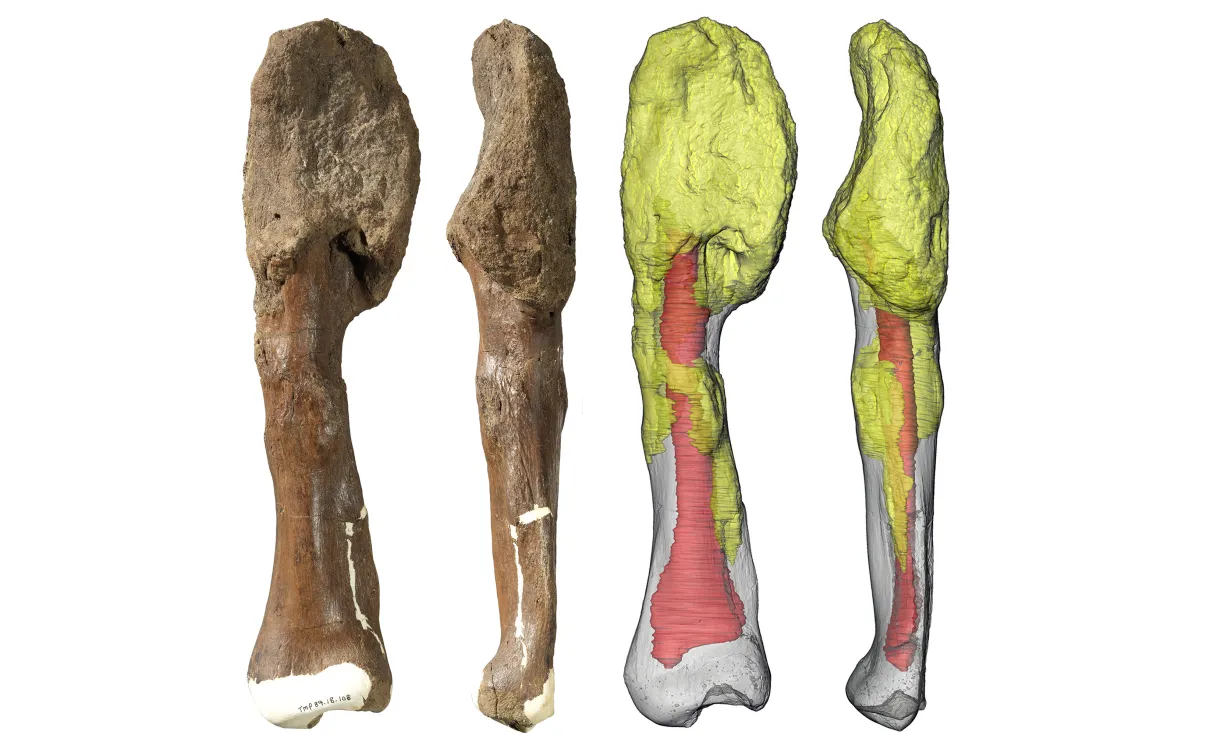Malignant Cancer Found in Dinosaur
New research shows evidence of advanced disease in dinosaur bone.
Published
Category
Author
A malformed lower leg of a Centrosaur
A malformed lower leg of a Centrosaur, initially thought to be a healing fracture, has been diagnosed by researchers from the ROM and McMaster University as osteaosarcoma (an aggressive bone cancer) in the dinosaur.
A mass extinction event marked the end of dinosaurs 66 million years ago. With the discovery of each dinosaur fossil, scientists study the bones to build a picture of what life looked like in the Mesozoic era. This is the first time a malignant cancer has been diagnosed in dinosaurs—a discovery that offers unprecedented access into the diseases that existed millions of years ago.
A team of multidisciplinary specialists led by David Evans, the James and Louise Temerty Endowed Chair of Vertebrate Palaeontology at the ROM and Mark Crowther, Professor of Pathology and Molecular Medicine at McMaster University, included medical professionals from fields including pathology, radiology, orthopaedic surgery, and palaeopathology. They examined the fibula of Centrosaurus apertus, a horned dinosaur that lived 76 to 77 million years ago.
“Diagnosis of aggressive cancer like this in dinosaurs has been elusive and requires medical expertise and multiple levels of analysis to properly identify,” says Crowther. Using a normal fibula from a dinosaur of the same species, as well as the fibula of a human with a confirmed case of osteosarcoma, the researchers were able to confirm the diagnosis. The extensive invasion of the cancer throughout the bone suggests that it persisted for a considerable time period of the animal’s life and may have spread to other parts of the dinosaur’s body prior to death.
According to Evans
According to Evans, an expert on horned dinosaurs, the research uncovers that the dinosaur was suffering from an advanced stage of osteosarcoma. “The cancer would have had crippling effects on the individual and made it very vulnerable to the formidable tyrannosaur predators of the time. The fact that this plant-eating dinosaur lived in a large, protective herd may have allowed it to survive longer than it normally would have with such a devastating disease.”
Osteosarcoma is an overgrowth of disorganized bone, that spreads rapidly both through the bone in which it originates and to other organs, including most commonly, the lung. This is the same type of cancer that afflicted Canadian athlete Terry Fox. It is a disease that tragically strikes young people in the second or third decade of their lives. This research establishes a clear link between human disease and diseases of the past and opens the doors to a greater understanding of the genetics and evolution of animal diseases.




